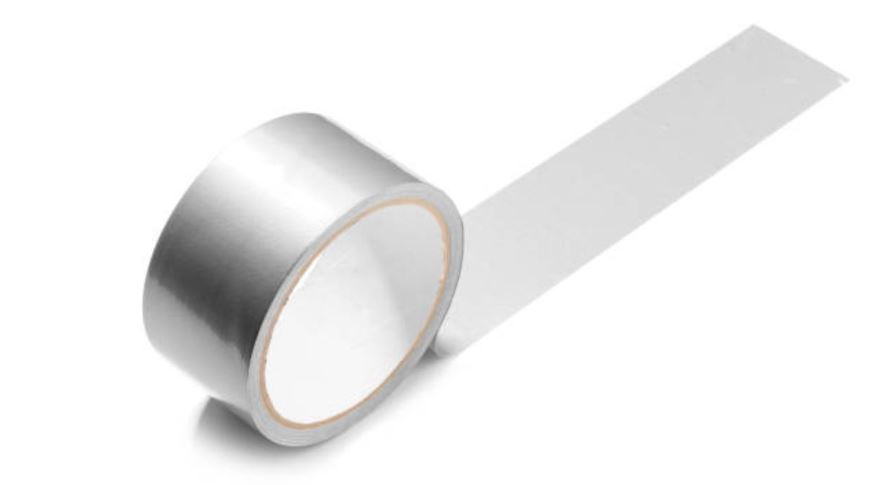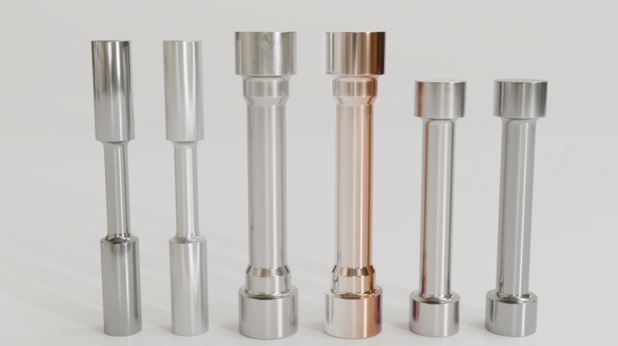A Comprehensive Insight Into Hot Melt Adhesive Film: How Appropriate this Adhesive Film with Bonding Textiles will Endure Heavy Stress
Hot melt adhesive films can be defined as relatively new technology implementations aimed at improving the structure and the scope of use of textile materials. They are plastic films which are bonded to a ‘hot’ cloth after a certain amount of heat is applied. The use of this technology in the garment sector is rapidly increasing because the fabrics can be joined together without the use of stitches or any other types of mechanical fasteners. This technology does not only give strong adherence but also have washing resistance and flexibility which makes it ideal for use in both industrial and consumer textiles. The understanding of the science surrounding these adhesives will enable the manufacturers to enhance the value of the product and efficiencies of textile manufacture processes.
What is Hot Melt Adhesive Film?
Hot melt adhesive film is a solid, thermoplastic adhesive that is not tacky until heated. It is primarily used for bonding in several sectors, but hot melt adhesive film is widely used for bonding textiles because it is efficient and clean bonding techniques. The film is easy to use as it can be pre-cut accurately and’some’ Assembly through sewing is eliminated by employing applique heat transfer technology which allows sewing free bonding of the fabrics or other components together. This technology not only simplifies the main assembly process but also improves the mechanical function and appearance of the final product.
For more in-depth information you should view from Hot Melt Adhesive Film – Hengning
How does hot melt adhesive work?
The hot melt glue’s functionality is based on its ability to change physical state upon heating. This implies that an increase in temperature causes the hot melt glue’s film that is heated to shift from solid case to a melted glue film. Thus, when the glue is bonded to surfaces, it cools and solidifies. Automated assembly lines work to perfection with this process. Precision and speed of work is made possible. The advantage of heating and fusing again makes it easy to make some amendments and changes to the product during the making process.View Hot Melt Adhesive Film – Hengning for More Details
What are the basic components of hot melt adhesives?
The basic constituents of hot melt adhesive include polymers, tackifying resins, waxes, and antioxidants. Polymers serves as the backbone and determines the physical form and bonding properties of the adhesive, whereas tackifying resins contain the enhancement of its adhesion potential. Waxes help in the use of the hot melt adhesive in cooler and hotter conditions by changing the melting properties of the adhesive. Antioxidants are meant to alter thermal stability of the adhesive increasing it’s shelf life by discouraging degradation.
What kinds of hot melt adhesive films exist?
The available hot melt adhesive films are varied in essence since they are manufactured for distinct applications and specifications. Common types include polyurethane (PU), polyamide (PA), ethyl vinyl acetate (EVA), and polyolefin based films. PU films are appreciated due to their elasticity and strong combined bonds of fabrics, where the cross sectional membranes apply into textile applications. PA films are thick and durable making them have high resistance against the attacks of heat and several chemicals. EVA films are important as they are able to adhere well and bond at lower temperatures and provide excellent adhesion, while polyolefin films are economical, have moderate adhesion, and used in a wide variety of applications. Each type features unique characteristics which satisfy the various kinds of performance requirements in industrial operations.
Common Uses of Hot melt Adhesive Film in the Textile Sector
How is melt adhesive film for textile mostly utilized?
The primary objective of melt adhesive film for textile products is to bond two or more fabrics together in order to increase the strength of the end product. This is done by placing this particular film in between two pieces of fabric and subjecting it to heat and pressure in order to melt it, thus bonding the two pieces without having to hand sew them together. Such films are very useful in the production of clothing, home textiles, and technical textiles as they are effective in production and broadens design options.
What is the importance of adhesive film in textile fabric bonding?
Adhesive film in textile bonding, in an essential way, is an important component of the current textile bonding methods. It allows for the partial merging of the bonded layers, that is merging the layers of fabrics together within their parameters of aesthetic and flexibility without the layers being bonded too much. In their bond application, the manufacturers are able to achieve a neat finish, even though this style cuts across a wide range of breathable and light weight fabrics of different sizes, adhesive film still comes in handy as it allows for multiple fabrication methods.
Is it possible to use hot melt adhesive for laminating?
Absolutely, hot melt adhesive can also be utilized for the purpose of lamination. In the case of lamination, it gives a strong bond between various substrates such as fabrics, foams or other composites. The method includes the adhesion application in the form of a film or coating to one or multiple surfaces heat and pressure are then applied in order to create a tough laminate structure. Due to the fast operation and controlled quality, this technology is useful in the garment business as well as many other industrial and household applications.
Advantages of Applying a Double-Sided Hot Melt Adhesive Film
What are the benefits of applying double-sided hot melt adhesive film?
Double sided hot melt adhesive films have many advantages when it comes to the bonding process in textile and material applications. First, this makes it possible to achieve a more even adhesion, and thus a stronger and a more stable bonding of the material layers. This type of adhesive films makes use of clean and efficient bonding without leaving any mess that may be associated with the use of liquid adhesives. This is more applicable for industries that involve mass production since it does not require drying time thus improving the work rate. The heat-activated adhesive films can range from heavy to light bonding, ensuring that the fabric bonds well together without sacrificing flexibility and softness of the material.
How does htv4u double sided hot melt adhesive tapes differ from standard options?
The htv4u hot melt adhesive tape on both sides has been created to meet the drawbacks of conventional bonding. When htv4u is compared to those, they have a high Bond Strength particularly when the requirements are for high-performance textile usage. Also, this has been set to bond on more challenging substrates even where other adhesive bonding materials may fail to perform acceptably. Its versatility in temperature activation range also makes it suitable for diverse environments and materials. To add htv4u creates less adhesive and loss of material which gives a better appearance and upholds the right texture and look of the fabric.
Can you provide some examples of where double-sided adhesive sheets can be used?
In fact, given their versatility and high tensile strength, double sided adhesive sheets can be utilized for a number of operations within several industries. In the textile sector, for example, these sheets assist in the combination of multilayer fabrics, clothing, and their accessories where an area requires bonding without the presence of sewing or mechanical fixtures. These sheets also provide benefits in the automotive and aerospace industries for the interiors where the assemblies are lightweight and require critical space. Moreover, in electronics, they act as insulators or spaces in the devices, firmly adhering parts but not adding extra weight to the device. The sheets that are coated with adhesive on both sides help in complex designs while providing aesthetic and functional values to the final product.
How to Apply Hot Melt Adhesive Film?
What do I require for iron on adhesive application?
To apply iron on adhesive some basic tools that are required would be an iron with adjustable temperatures and an ironing board or any flat heat resistant surface. Also a silicone release or parchment paper would be used to cover the fabric as well as the adhesive which would be provided in direct heat. In order to shape or size the adhesive film necessary precision tools such as a cutting mat, rotary cutter, or a craft knife may also be applied. And so that the measurements are accurate, necessary tools would be a heat resistant ruler as well as measuring tape to ensure precision in adhesion on the substrate.
How do you properly apply hot melt film?
For better results while applying hot melt film there are several important stages that would be carried out. First ensure that the iron is fully preheated to the appropriate temperature that suits the underlying material. Apply the fabric onto a flat surface after making sure the hot melt film is in the right position. Use the silicone paper to cover the fabric. Grab the heated iron and press onto the fabric for an even time and pressure for bonding, tl it gets taped and firmly slinks the fabric together. Leave it there to cool off for a little time and after that again use the displacement paper and inspect the bond and disband it using the tack. If not the adhesive film would be properly pressed allowing for good adhesion.
How to ensure strong adhesion with heat transfer vinyl?
To ensure a secure bond with heat transfer vinyl, it is of utmost importance to monitor three factors: temperature, pressure, and time. Moisture present in fabrics acts as an impediment to adhesion, therefore the first step involves preheating the fabric. Position the vinyl in place, and apply a heated iron or heat press set to the temperature recommended by the manufacture. Follow this by covering the fabric with the heat source while applying pressure for a specific time, usually between 10 to 20 seconds. Finally after removing the carrier sheet, allow the vinyl to cool down slightly. It is advisable to test a small section before proceeding with the full application to prevent incorrect adjustments.
Choosing the Right Hot Melt Adhesive Film
Among the qualities of an ideal adhesive, which ones do you consider to be paramount in order to choose one?
When choosing an adhesive several key factors should be taken into consideration, especially in circumstances when the adhesive’s performance is needed to be optimal in the process of application. In essence it becomes critical to address the preexisting environmental conditions: which material would act as the substrate, where and how would the adhesive be used, its intended strength, as well as how and by which equipment would it be applied. Now consider the factors that the adhesive is designed to withstand: temperature, moisture and chemicals, as under extreme conditions even the most powerful adhesive can dramatically fail. Additionally strength of bonds acquired, flexibility and overall residue on removal should be considered for the adhesive as well.
What are the effects of varying film types on performance?
A wide variety of films can significantly modify the action of a hot melt adhesive. As the base polymers vary among films, they also differ in their flexibility, melting temperature, and potential areas of application of bonding. For example, down streaming to the lower end of the market, Cost compressing is not easily achievable, as polyethylene based films are very resistant to chemical and not flexible, while polyurethane films possess great elasticity and strength. The same type of film should be used for the same bonding substrate to obtain the desired operational performance.
Why is surface bonding important in selecting an adhesive?
Surface bonding, which is crucial in adhesive selection, is one of the most critical procedural aspects, for it determines the effectiveness of the seal between the two surfaces. The surface features such as smoothness, porous nature, and cleanliness of the surfaces of a given material can determine the extent an adhesive can stick. Bonding features such as a clean surface of a texture appropriate for bonding can help eliminate adhesion failures and make the bond more reliable. When there is a requirement to bond strongly, it is necessary to use a film with good adhesion for the bonding material in order to achieve the performance specification.
Challenges Faced with Hot Melt Adhesive Films
How can one determine that the use of melt adhesive film hasn’t gone well?
A poor bond with a melt adhesive film may be evident when one finds that the surfaces that were supposed to be bonded together are starting to peel off or separate. Lesser bond power, or complete disintegration of the bond, can also be a result. Bubbles, wrinkles or even rolls of the film can also be a result due to improper thermal adhesion. As a rule of thumb, these should always be looked out for since they could affect the safety and overall purpose of the application.
Where do you start if there is a problem with adhesion?
Interfacial adhesion issues can arise due to a number of factors including application passing temperatures, and surface preparing and bonding parameters, all of which can be faults of the environment. It is important to first begin by checking the surfaces which were meant to be bonded to ensure that they do not contain any substances that may stop the adhesion process. Additionally, make sure that the film is compatible with the substrates to be bonded, and that the type of film, as well as the melting range, is suited for ambient conditions. Finally, altering the melting temperature or incrementing bonding pressure and time can help in fixing the rest of the adhesion issues.
What maintenance tips can improve the lifespan of hot melt adhesive?
Regular equipment maintenance would be one of the measures to take in order to improve the durability of the hot melt adhesive. Make sure the temperature and pressure settings are configured so that there will be no impairment of the hot melt adhesive. Use proper conditions to store adhesive film, away from moisture and heat, as this will enable it to perform its function for a longer period of time. Ensure the machines are serviced and cleaned frequently so that residues of the adhesive do not accumulate and affect future applications. With a preventive maintenance plan in place expect performance consistency and prolonged use of the hot melt adhesive.




